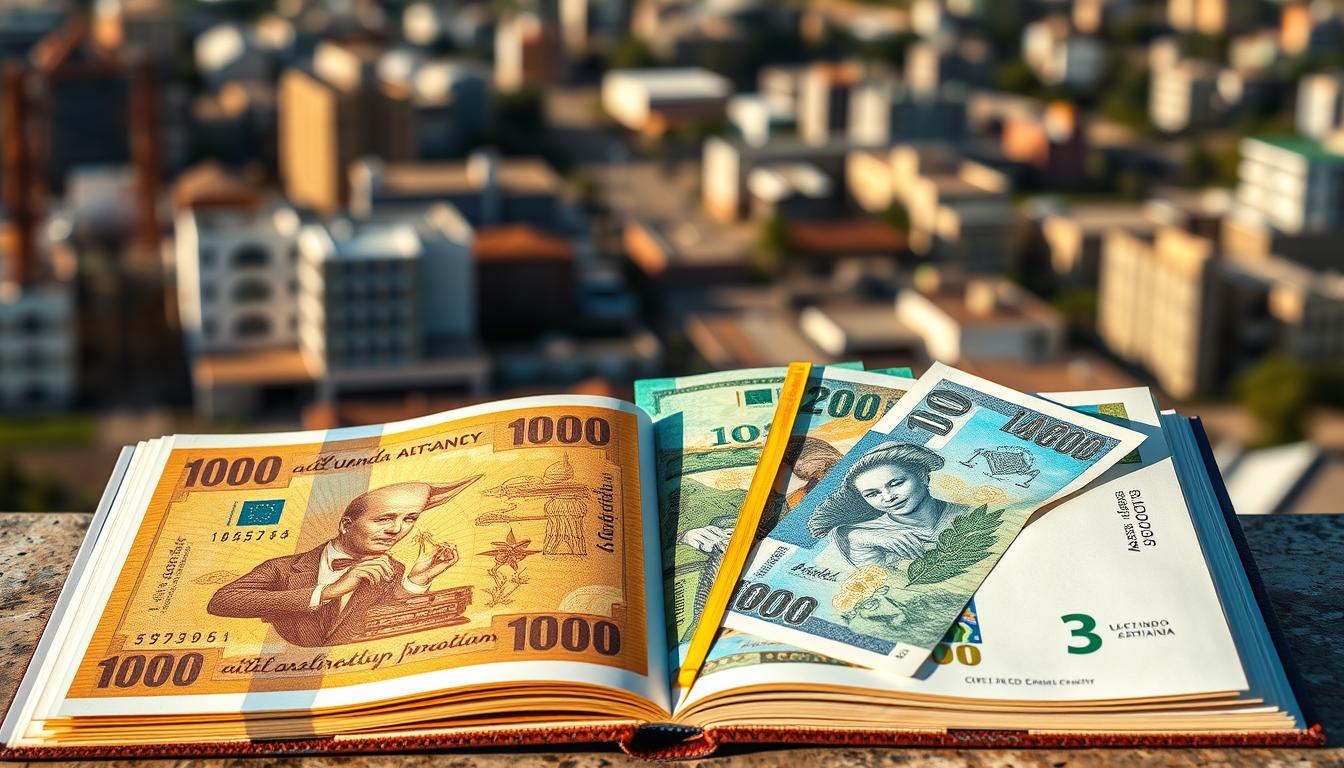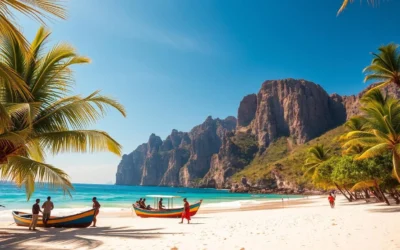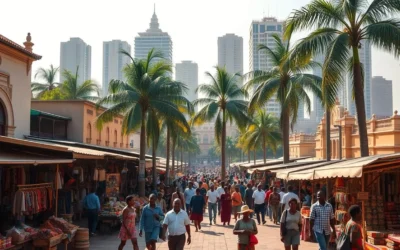✓ Accommodations✓ Flights✓ Rental Cars✓ Tours & Activities
Did you know that the Angolan Kwanza (AOA) is the only legal tender in the country, yet U.S. dollars are occasionally accepted? This unique currency landscape makes it essential to plan your money management before your trip. Understanding the local currency can save you time, avoid unnecessary fees, and ensure a smoother experience.
Carrying a travel money card can be a game-changer. Cards like Wise, Chime, and Monzo offer competitive exchange rates and low transaction fees, making them ideal for international travel. Plus, they provide a secure way to access cash without relying solely on ATMs, which can sometimes be unreliable.
This guide will help you navigate payments in Angola with ease. From practical tips on exchanging currency to avoiding hidden fees, you’ll find everything you need to make your trip stress-free. Start planning today to enjoy a seamless adventure!
Overview of Angola’s Currency Landscape
Navigating the financial landscape in this African nation requires a solid understanding of its official currency, the Angolan Kwanza (AOA). As the only legal tender, the kwanza is essential for all transactions, from buying groceries to paying for transportation. Familiarizing yourself with this currency can save you time and ensure a smoother experience during your visit.
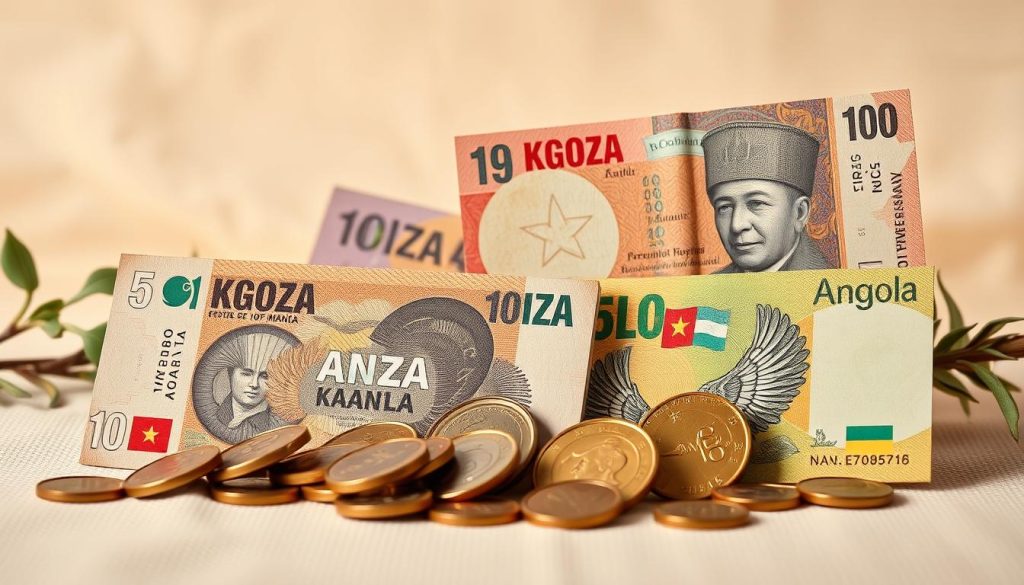
Introduction to the Angolan Kwanza (AOA)
The Angolan Kwanza (AOA) is the backbone of the country’s economy. It comes in various denominations, including coins and banknotes, making it versatile for everyday use. While cash remains widely accepted, especially in rural areas, card payments are increasingly common in urban centers.
Here’s a quick breakdown of the kwanza denominations:
| Denomination | Type |
|---|---|
| 10, 50, 100, 200, 500, 1,000, 2,000, 5,000 | Banknotes |
| 10, 50 Cêntimos, 1, 2, 5 | Coins |
Key Economic and Cultural Insights
The country’s economy has been shaped by its history and natural resources, particularly oil. Despite challenges, Angola has made strides in modernizing its financial systems. Today, both cash and card payments are integral to daily life, with ATMs widely available in cities.
Using a reliable travel card can help you avoid excessive fees and improve security. International transfers are also supported, though it’s essential to understand the local banking regulations. By planning ahead, you can ensure a stress-free experience while exploring this vibrant nation.
Benefits of Using Travel Money Cards in Angola
Travel money cards are a smart choice for managing your funds abroad, offering both security and convenience. These cards are designed to simplify your financial transactions, whether you’re shopping, dining, or withdrawing cash. By isolating your travel funds from your main bank account, they provide an extra layer of protection against theft or loss.
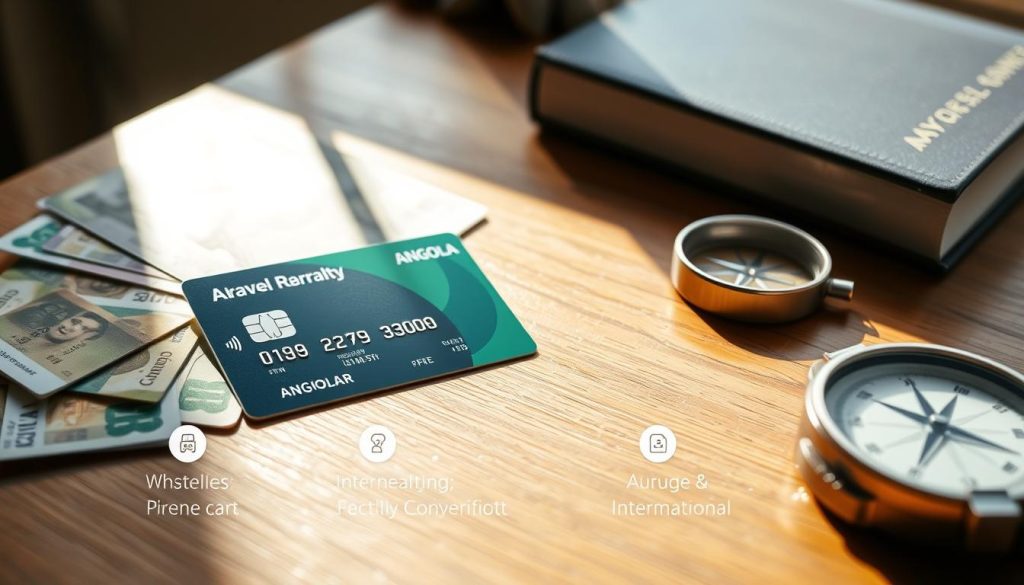
Enhanced Security and Convenience
One of the standout features of travel money cards is their enhanced security. Unlike traditional debit or credit cards, these cards are not linked to your primary bank account. This means that even if your card is lost or stolen, your main funds remain safe. Additionally, many cards offer features like instant freezing and unfreezing through mobile apps, giving you full control over your finances.
Travel money cards also save you time by eliminating the need to hunt for currency exchange services. With competitive exchange rates and low transaction fees, they are a cost-effective solution for international travel. For example, Wise offers mid-market exchange rates, while Chime and Monzo charge no foreign transaction fees.
Comparing Exchange Rates and Transaction Fees
When choosing a travel money card, it’s essential to compare exchange rates and fees. Some providers, like Wise, offer mid-market rates, ensuring you get the best value for your money. Others, such as Monzo, have no ATM withdrawal fees, making them ideal for frequent cash users.
Here’s a quick comparison of popular travel money cards:
| Provider | Exchange Rate | Foreign Transaction Fee | ATM Withdrawal Fee |
|---|---|---|---|
| Wise | Mid-market rate | Low | $2.50 (after free limit) |
| Chime | Varies | None | $2.50 (out-of-network) |
| Monzo | Varies | None | None |
| Netspend | Varies | Up to 4% | Varies |
By selecting a card with transparent fees and competitive rates, you can enjoy significant savings on your trip. As one traveler noted,
“Using a travel money card was a game-changer for my budget—no hidden fees, just peace of mind.”
Whether you’re exploring bustling cities or remote areas, travel money cards provide a secure and efficient way to manage your funds. Start planning today to make your journey smoother and more enjoyable!
Angola: Ultimate Travelers Guide to Currencies & Payments
Choosing the right travel card can make or break your trip, especially when exploring regions with unique financial systems. A good travel card ensures convenience, low rates, and budget-friendly options, making it a must-have for savvy travelers.
When selecting a card, consider factors like exchange rates, transaction fees, and ATM withdrawal limits. These features can significantly impact your spending and overall budget. For example, some cards offer mid-market exchange rates, while others charge no foreign transaction fees.
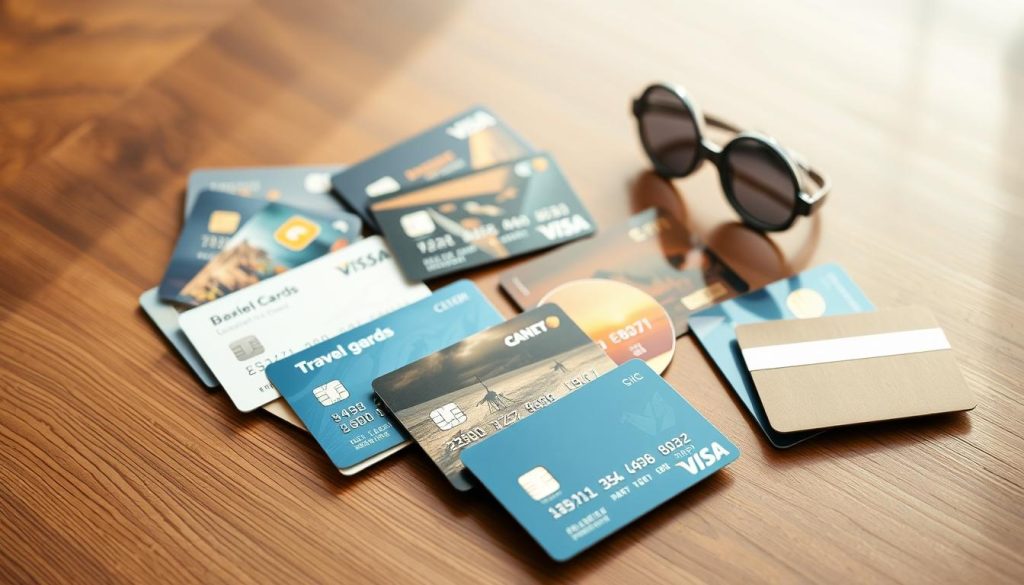
Here are some key criteria to help you choose the best card for your needs:
- Competitive Rates: Look for cards that offer mid-market or low exchange rates to maximize your money.
- Low Fees: Avoid cards with high transaction or ATM withdrawal fees.
- Mobile App Management: Choose cards with user-friendly apps for easy tracking and control.
- Transparency: Opt for providers that clearly outline their charges and policies.
As one traveler shared,
“Using a card with no hidden fees saved me hundreds on my trip—it’s worth the research!”
Top Travel Card Providers from the United States
Several U.S. providers stand out for their reliable and cost-effective travel cards. Here’s a comparison of popular options:
| Provider | Exchange Rate | Foreign Transaction Fee | ATM Withdrawal Fee |
|---|---|---|---|
| Wise | Mid-market rate | Low | $2.50 (after free limit) |
| Revolut | Mid-market rate | None | None (up to $1,200/month) |
| Chime | Varies | None | $2.50 (out-of-network) |
| Monzo | Varies | None | None |
Each provider has unique benefits, so consider your spending habits and budget when making a choice. For instance, Wise is ideal for frequent travelers due to its mid-market rates, while Monzo is perfect for those who prefer no ATM fees.
By selecting the right card, you can enjoy a seamless payment experience and focus on making the most of your trip. Start exploring your options today to ensure a stress-free adventure!
How to Manage Money Transfers and Currency Exchange in Angola
Managing your finances while traveling can be tricky, but choosing the right payment method can make all the difference. Whether you’re planning your trip or already on the ground, understanding your options is key to avoiding unnecessary charges and stress.
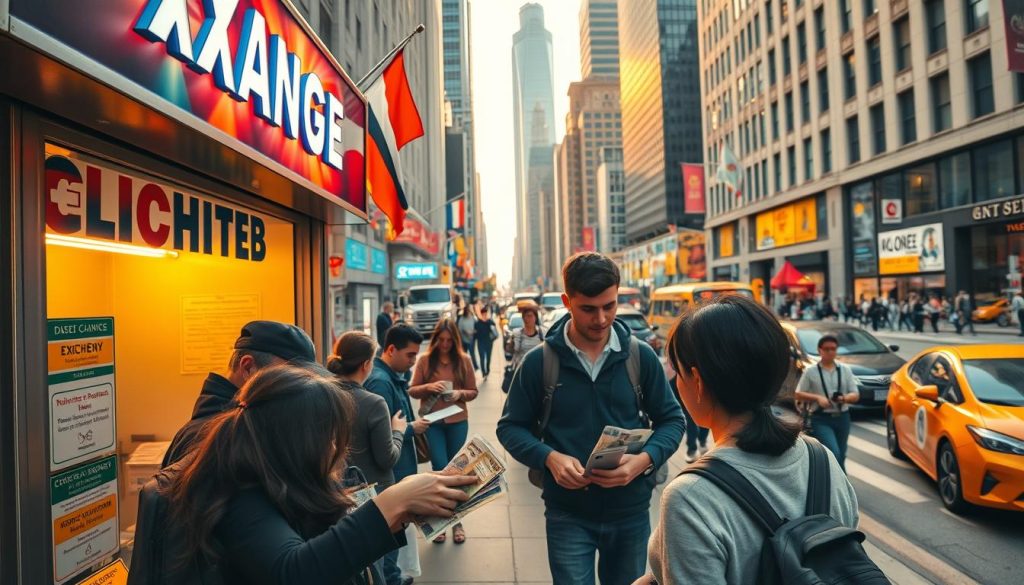
Prepaid Cards vs. Traditional Debit/Credit Options
Prepaid travel cards are a secure way to lock in exchange rates before you depart. Unlike traditional debit or credit cards, they allow you to load multiple currencies at mid-market rates, saving you money on fees. This is especially useful for travelers who want to stick to a travel budget.
Traditional debit and credit cards, while convenient, often come with hidden fees. These can include foreign transaction fees, ATM withdrawal fees, and unfavorable exchange rates. For example, some banks charge up to 3% for international transactions, which can add up quickly.
Here’s a quick comparison of the two options:
| Feature | Prepaid Cards | Traditional Cards |
|---|---|---|
| Exchange Rate | Mid-market rate | Bank-set rate (often higher) |
| Foreign Transaction Fee | Low or none | Up to 3% |
| ATM Withdrawal Fee | Low or none | $2-$5 per withdrawal |
| Security | Funds isolated from main account | Linked to primary account |
Using a prepaid card can also simplify your plan. Many cards come with mobile apps that let you track spending, freeze your card if lost, and reload funds instantly. As one traveler shared,
“Switching to a prepaid card saved me from unexpected fees and gave me peace of mind during my trip.”
For those who prefer traditional cards, it’s worth checking with your bank about their international policies. Some providers offer cards with no foreign transaction fees, which can be a good alternative.
When it comes to money transfers, prepaid cards often have the edge. They allow you to send and receive funds quickly, with lower fees compared to traditional wire transfers. For example, TransferWise offers real exchange rates and upfront fees, making it a popular choice among travelers.
By choosing the right payment method, you can focus on enjoying your trip without worrying about finances. Start planning today to make your journey smoother and more enjoyable!
Practical Tips for Paying and Withdrawing Cash in Angola
Handling cash and payments in a foreign country can be straightforward with the right tools and knowledge. Whether you’re using ATMs or mobile payment solutions, planning ahead ensures a smooth experience. Here’s how to manage your funds efficiently while exploring.
Using ATMs and Mobile Payment Solutions
ATMs are widely available in urban areas, but fees can vary. To avoid high charges, use travel cards like Wise or Monzo, which offer free or low-cost withdrawals. Always check for secure, well-lit ATM locations to ensure safety.
Mobile payment solutions like Apple Pay are gaining popularity. Many businesses accept contactless payments, making it a convenient option. Ensure your travel card supports mobile wallets for seamless transactions.
Here’s a quick comparison of travel card features:
| Provider | ATM Withdrawal Fee | Mobile Payment Support |
|---|---|---|
| Wise | Free up to $250/month | Yes |
| Monzo | None | Yes |
| Chime | $2.50 (out-of-network) | Yes |
| Revolut | None (up to $1,200/month) | Yes |
Carry a mix of cash and cards for flexibility. While cards are convenient for most transactions, having some Angolan Kwanza on hand is useful in rural areas or smaller establishments.
Set up notifications on your travel card app to monitor spending and exchange rates in real time. This helps you stay within budget and avoid surprises. As one traveler shared,
“Using a travel card with real-time alerts kept me on track and saved me from overspending.”
By following these tips, you can navigate payments with ease and focus on enjoying your trip. Start planning today to make your journey smoother and more enjoyable!
Optimizing Your Travel Budget with Smart Payment Strategies
Smart payment strategies can transform your travel budget, helping you save significantly. By avoiding hidden fees and monitoring exchange rates, you can make the most of your money. Here’s how to stay ahead and keep your finances in check.
Avoiding Hidden Fees and Costly Conversions
Hidden fees can quickly eat into your travel budget. Always read the fine print of your travel card provider to understand their fee structure. For example, some cards charge high transaction fees for international payments or ATM withdrawals.
Using a Revolut card or similar provider can help. These cards often offer transparent fee structures and competitive exchange rates. As one traveler noted,
“Switching to a Revolut card saved me from unexpected fees and gave me peace of mind.”
Setting Up Alerts for Favorable Exchange Rates
Exchange rates fluctuate, and timing your spending can make a big difference. Many travel card apps allow you to set up alerts for favorable rates. This way, you can decide when to spend AOA or convert your currency.
For instance, if the exchange rate improves, you can load more funds onto your card or make larger purchases. Continual monitoring ensures you’re always getting the best value for your money.
Here’s a quick comparison of popular travel card features:
| Provider | Transaction Fee | ATM Withdrawal Fee | Exchange Rate Alerts |
|---|---|---|---|
| Revolut | None | None (up to $1,200/month) | Yes |
| Wise | Low | $2.50 (after free limit) | Yes |
| Monzo | None | None | Yes |
By integrating these strategies into your travel planning, you can optimize your budget and focus on enjoying your trip. Start exploring your options today!
Additional Travel Insights and Local Payment Etiquette
Understanding local payment etiquette can make your travels smoother and more enjoyable. While cash and cards are both widely used, knowing how to navigate transactions respectfully can enhance your experience. Here’s what you need to know to spend like a local.
Understanding Cultural Payment Practices
In many places, cash remains king, especially in smaller towns and rural areas. While cards are accepted in urban centers, carrying local currency is essential for smaller transactions. Tipping is appreciated but not mandatory; 10% is a good guideline for restaurants and services.
When using ATMs, be mindful of potential ATM fees. Stick to machines in well-lit, secure locations, and withdraw during daylight hours for safety. Some ATMs may not accept foreign cards, so it’s wise to use those in major banks or shopping centers.
Best Practices for Spending Like a Local
Adapting to local habits can make your interactions more seamless. For example, greeting vendors politely before starting a transaction is a common practice. Carrying smaller bills is also helpful, as some establishments may not have change for larger denominations.
Mobile payment apps are gaining popularity, offering a convenient alternative to cash. If you’re tech-savvy, consider using apps like Multicaixa Express for quick and secure payments. As one traveler shared,
“Using mobile payments saved me time and made shopping hassle-free.”
By observing and adapting to local practices, you’ll not only manage your money better but also connect more authentically with the culture. Start planning today to make your journey smoother and more enjoyable!
Conclusion
Planning your finances wisely can make your trip stress-free and enjoyable. Using travel money cards like Wise or Monzo ensures convenience, security, and a good exchange rate. These tools help you avoid hidden fees and manage your account efficiently, whether you’re shopping or withdrawing cash.
Securing a good exchange rate is crucial for maximizing your budget. Prepaid cards and mobile payment solutions offer flexibility, especially in areas where cash is preferred. Always monitor your spending and set up alerts to stay on track.
By preparing ahead and choosing the right payment methods, you can focus on exploring without financial worries. Refer back to this guide for last-minute reminders and tips. Wishing you safe travels and a rewarding experience!
The above is subject to change.
Check back often to TRAVEL.COM for the latest travel tips and deals.
